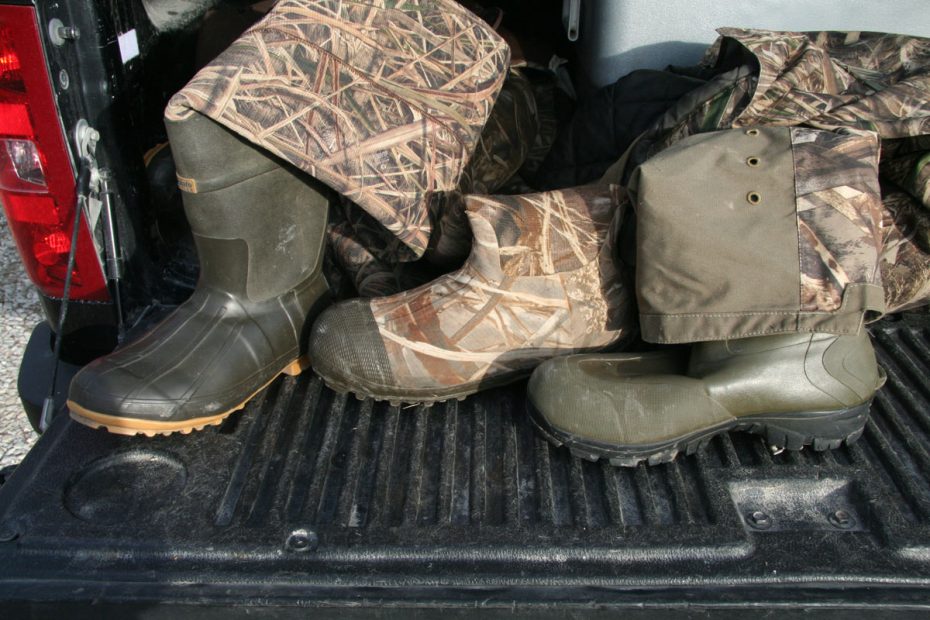A preface to this article is waders are tough to come by at this time. As the summer of 2022 gets closer more will come available, but currently, many wader companies don’t have the sizes or styles in stock people want. I will add to this, never wait until the last minute to buy waders. By that I mean don’t wait until fall as all companies will eventually run out of waders and you will be stuck in the old leaky waders you promised yourself you would replace.
It is said a dry duck hunter is a happy duck hunter. For the many that hunt marshes, ponds, lakes, and rivers the need to enter the water is inevitable. Depending on the depth of the water you may opt for knee boots, waist waders, hip waders, or chest waders. The most popular is the chest wader and within that category, there are many options.
Waders come in two versions: uninsulated and insulated. In warmer climates the need for insulated waders is moot, but in colder areas being dry and warm is most important. It may be the material used to build the wader is also the insulation like neoprene or some have added insulation in the form of quilted liners that may be removable.
Of course, waders have boots so this is an area of great importance since our feet tend to get cold without adequate insulation. Most waders use a Thinsulate material ranging from 600 grams to 1600 grams of material. Generally, the higher the Thinsulate number the warmer the feet but the bulker the boot.
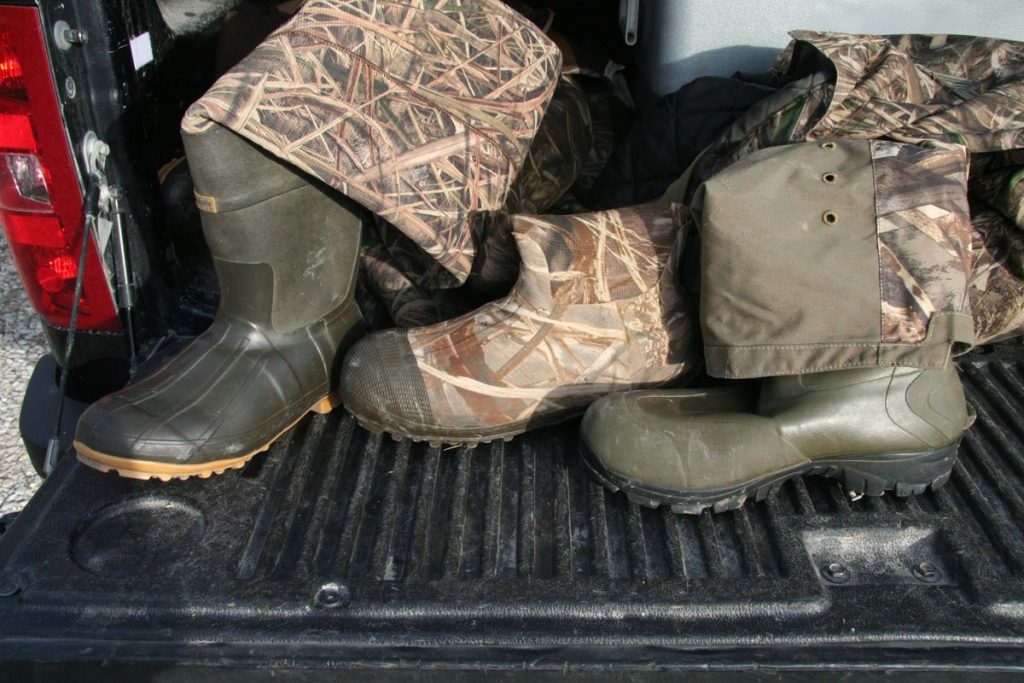
Neoprene waders are typically the entry-level wader for most. The material offers both warmth and durability. Many are also lined on the outside with a nylon or Cordura material to better resist punctures and tears. Knees, ankles, and seat also might get an extra layer. Keep in mind waders are not molded but rather bonded as pieces and often stitched as well. Those bonds must be strong, flexible, and resist stretching for a long-lasting wader. Most are finished off with sealing tape. As you move up in wader options these seams will be more reinforced and durable. Most will use a 3.5mm neoprene material, but some more expensive styles use 5mm.

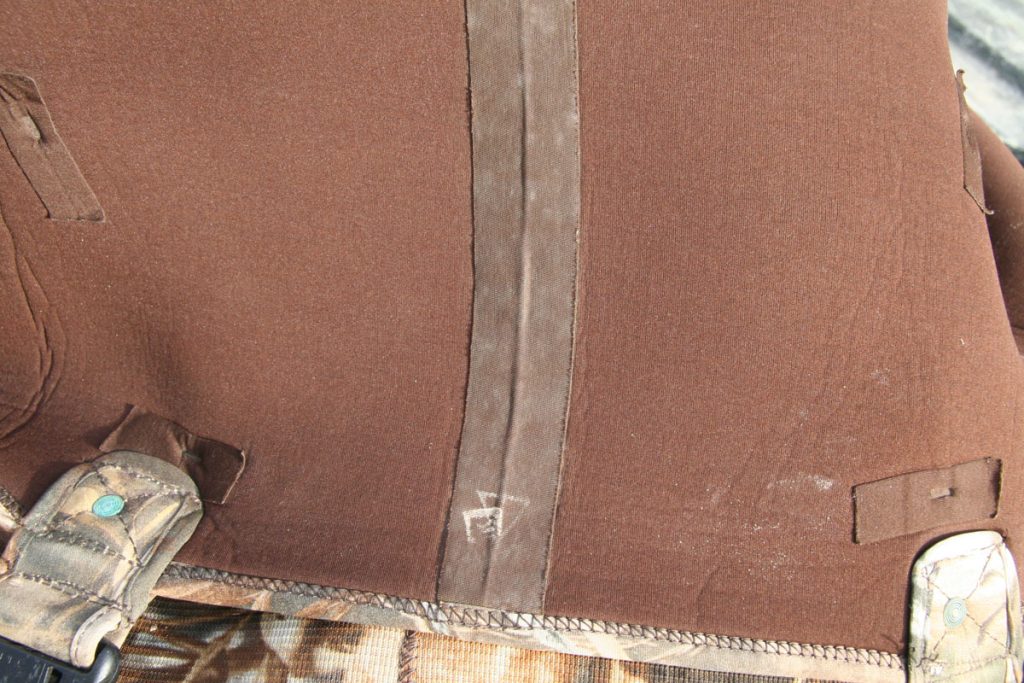
Breathable waders provide all-day comfort as moisture is wicked to the outside leaving your legs dry. They are more expensive, but well worth the expense if you hunt often and for long hours. Because the breathable material is not as durable as neoprene, most wader companies add an outer loose layer of reinforced nylon or Cordura. This offers knee, seat, and ankle protection but also makes them look more like pants than waders. Nonetheless, they are extremely comfortable.
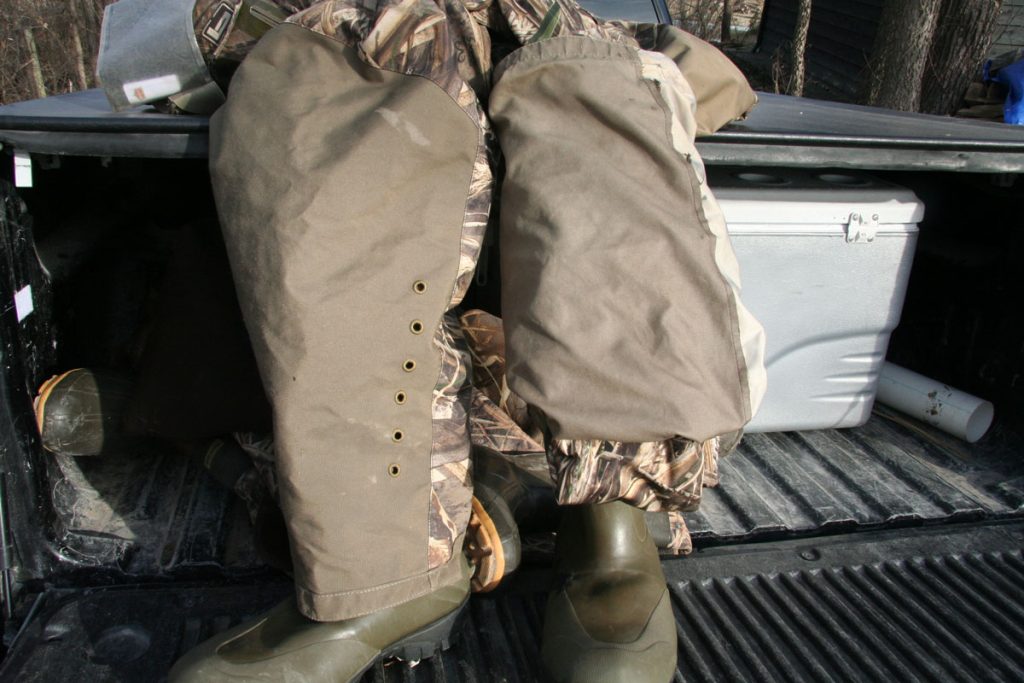
There are also hybrid wader designs coupling neoprene and breathable fabrics. This design provides a mid-point in pricing and gives the consumer a high-quality set of waders. Look for options too including loops and plastic D-rings for attaching items, shell holders, pocket warmers, adjustable shoulder straps, and dry-lined pockets.
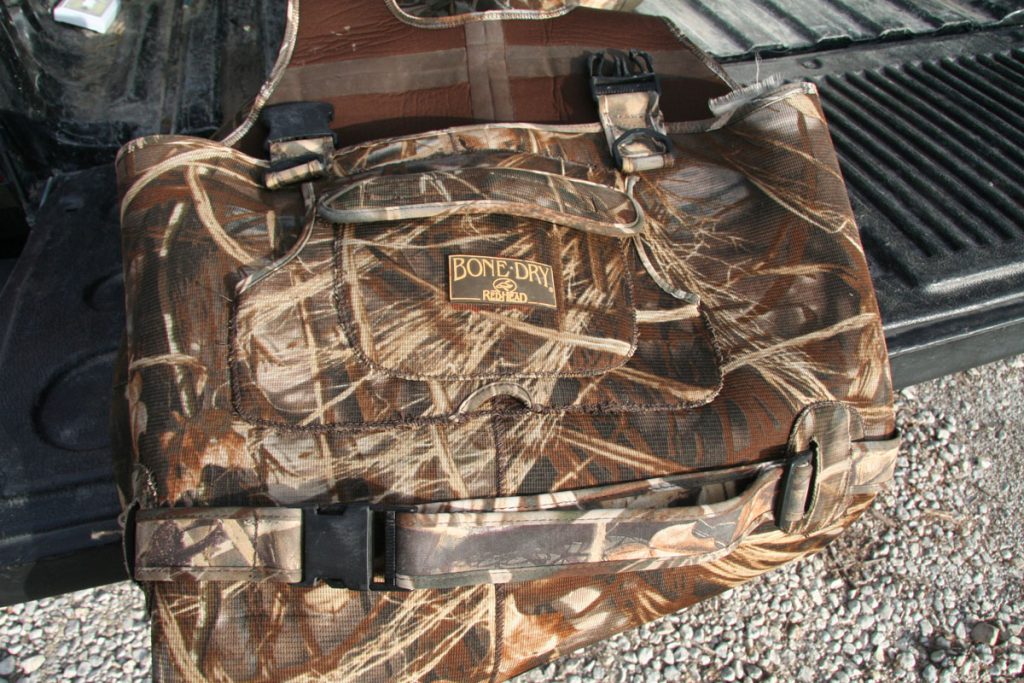
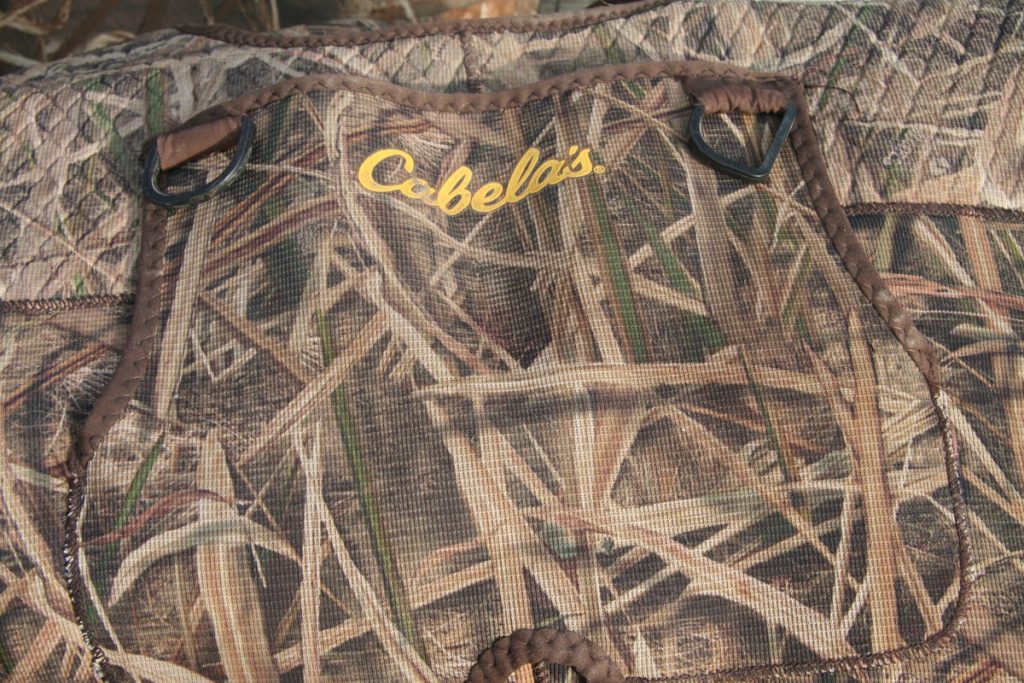
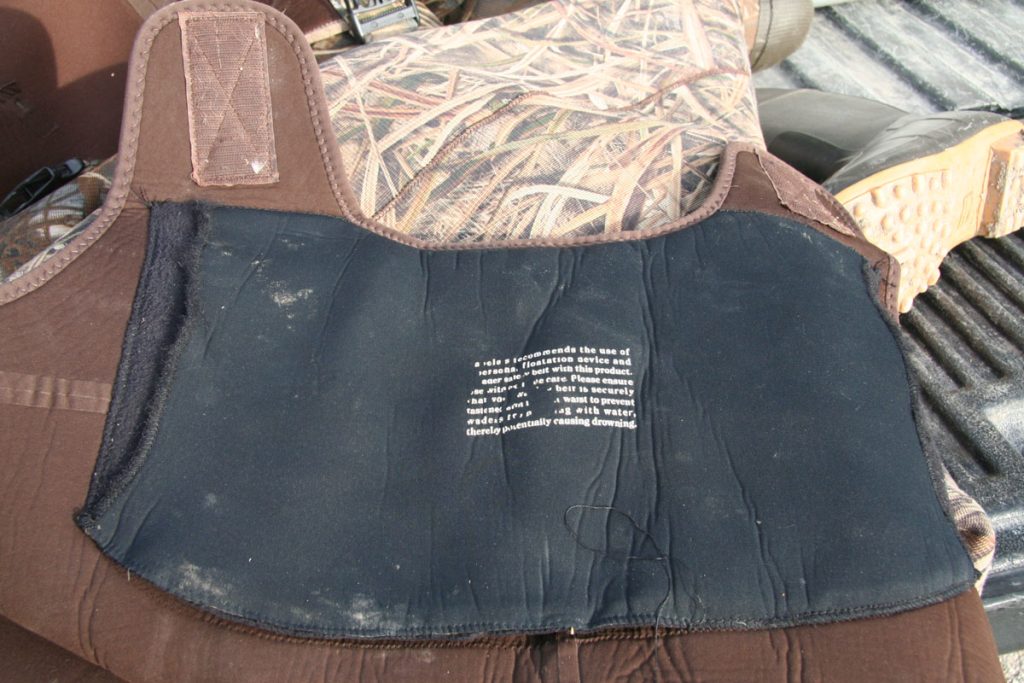

Let me say this about waders – the more you use them the more likely they are to leak. I am saying this with no disrespect for some great wader manufacturers, but more for the fact something eventually will cause your waders to leak. Cheap waders can leak the first time you wear them but so can expensive waders. As well, some may go weeks, months, or even years without leaking, but the wearer never took them deep enough to show a leak. If one spends all their time in a shallow marsh and never in the deep water perhaps up to their armpits, the leaks may never present themselves.
There is some common ground across all waders. They have belts or at least belt loops for making sure your waders are tight and if you do fall in minimal water will not get to the feet. Most have some form of the front wet pouch and perhaps a way to hold a few shells. There may also be an interior pocket or pouch. As you move up the pricing point the pockets might be lined with fleece, which is a great addition, and might even have a dry pouch for your cell phone.
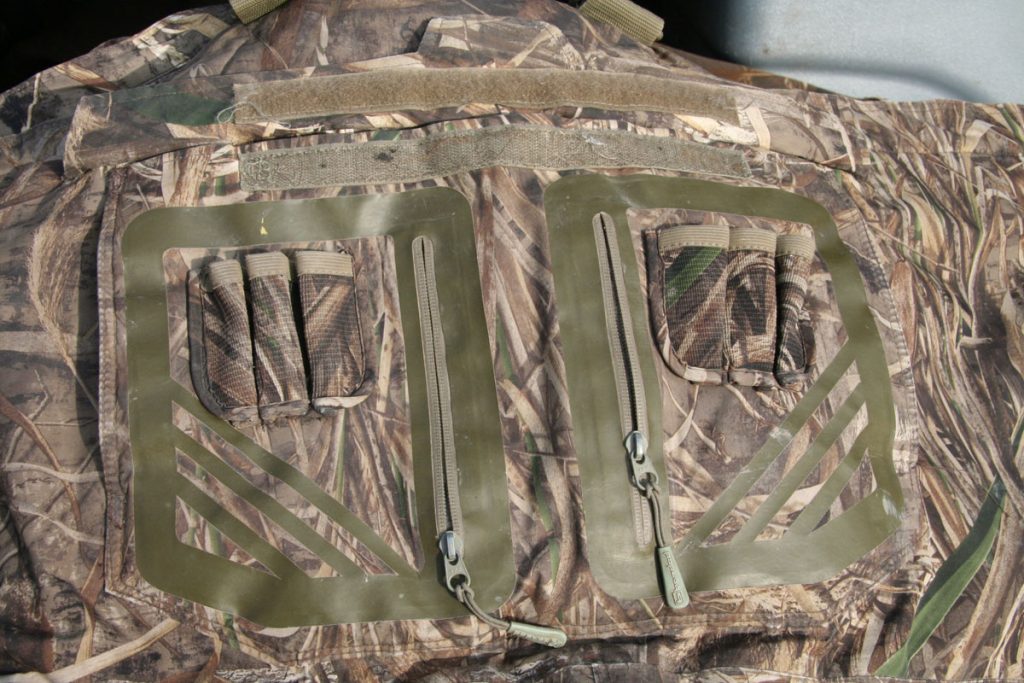
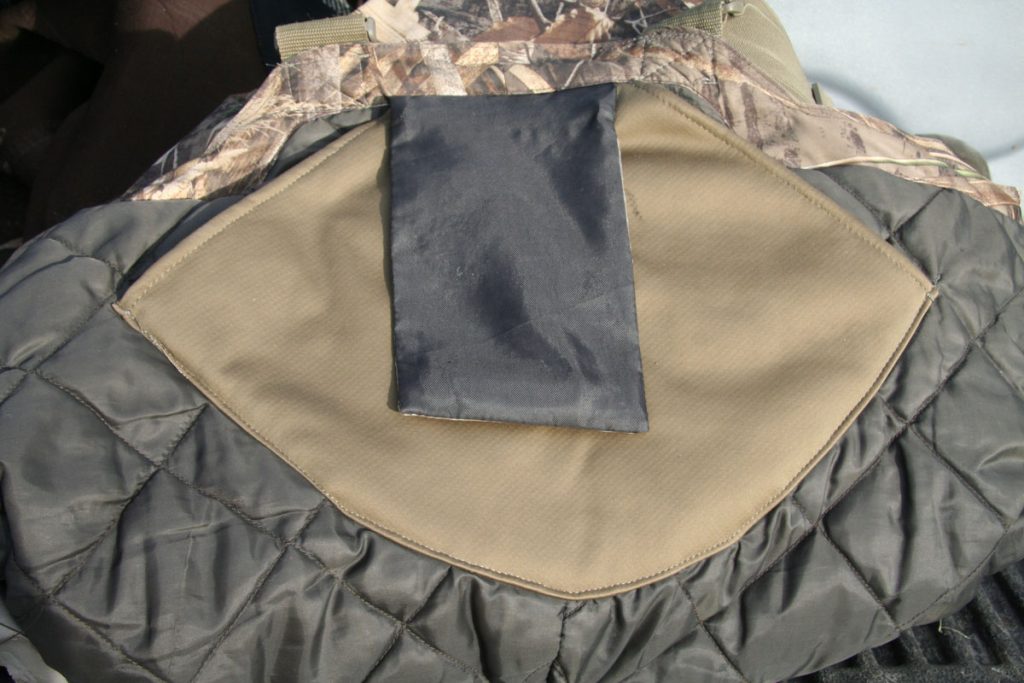
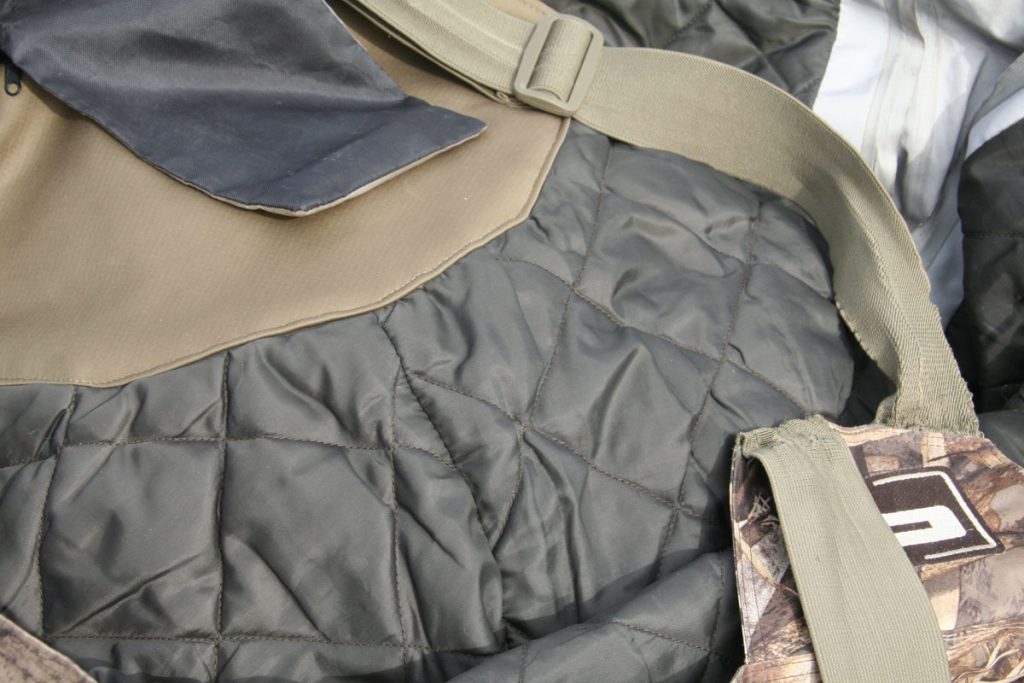

Boots will have appropriate cleats. One word of caution for all wader buyers is size. They come in regular, stout, and king with boot sizes to about 14. If you have high arches getting waders on can be problematic. One has to avoid getting too large a foot, as mud will pull them off. Too tight a foot and you have difficulty getting them on and worse — loss of circulation leading to cold feet.
Be prepared to return waders if they do not fit PERFECTLY. Mail order makes it more difficult, but many options exist online and many do not have access to a store to buy waders.
Let’s back up and walk through some pros and cons of three different types of waders. First up are Cordura coated neoprene waders. I am telling you these are tough and will take you about anywhere with little concern for being gentle. They handle brush, fences, heavy cover, corn stalks, and whatever you can throw at them. That is the upside. The downside is they are stiff, pull at your knees when you sit down, get really stiff when frozen by the water you are hunting and they are heavy. I don’t mean heavy duty, I mean heavy, which translates to your shoulders. A long day of standing with heavy waders is tough on the back. The stiffness can also cause problems when you need flexibility the most and that is when falling. If they can’t bend, or you can’t get them to flex you’re going to get wet. They can also be tough to get on. Finally, they do not breathe. That means over a long day no matter what you do, your legs, crotch, and waist will be clammy and wet from perspiration. Cost wise they are midpoint to the lower end and might be hard to find these days. I have a pair that I have had for many years and I loan them out with no one complaining about them leaking. Cordura waders will run about $200 to $300.
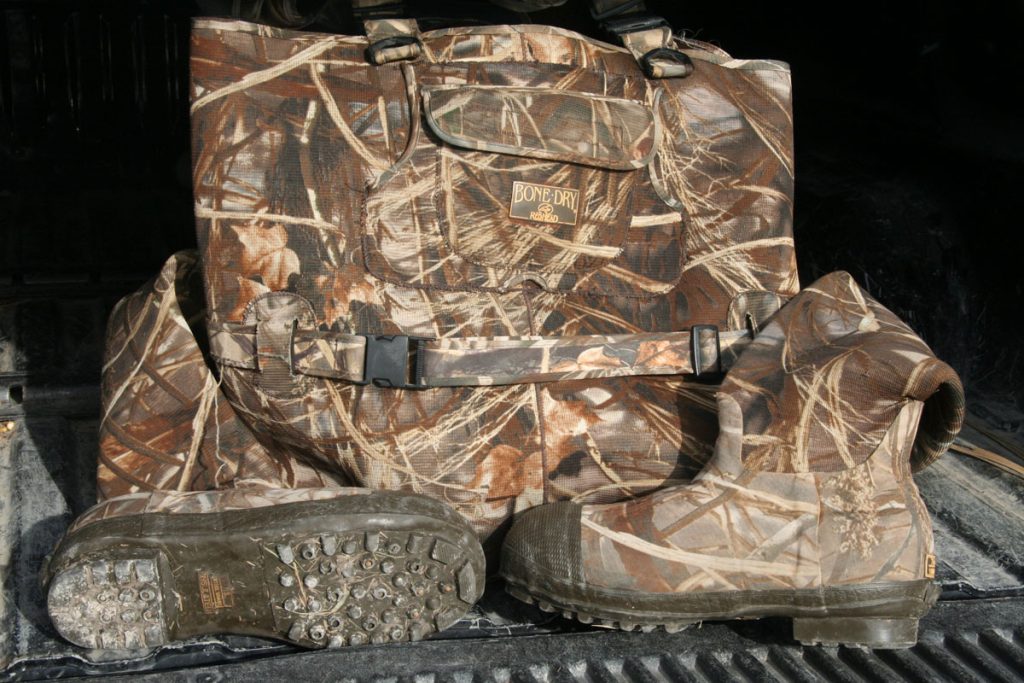
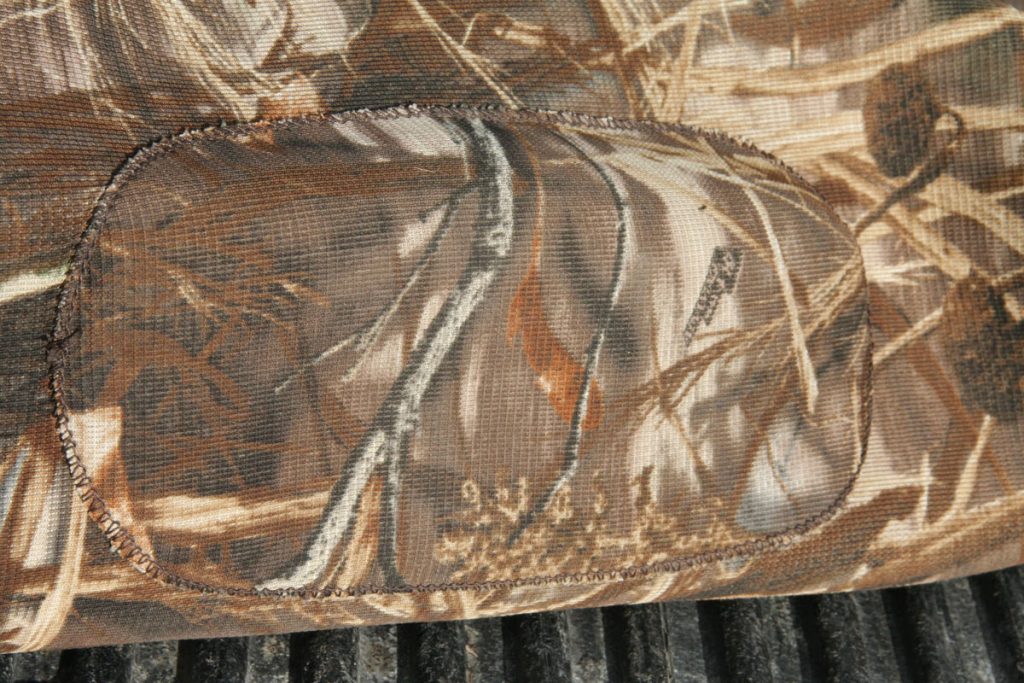
Second up are straight neoprene waders with reinforcement at the knees, crotch, and seat but otherwise all neoprene. There may be an outer lining of some type. The best thing you notice is some flexibility has returned and the neoprene stretches with its nylon shell, whereas the Cordura does not. Without a doubt, these are the most popular of all waders with a mid-price point making them affordable for all. There are lots of options in this line up including sizes, camouflage patterns, and insulation. Once again neoprene waders do not breathe. Some have liners that might absorb some of the perspiration, but really they do not exhaust moisture well. One caution is being sure you can get them on with all the reinforcements in place. As more is added to the outer layers, the tougher they can be to get on and off. Still don’t hesitate to consider these waders at around $200 to $300.
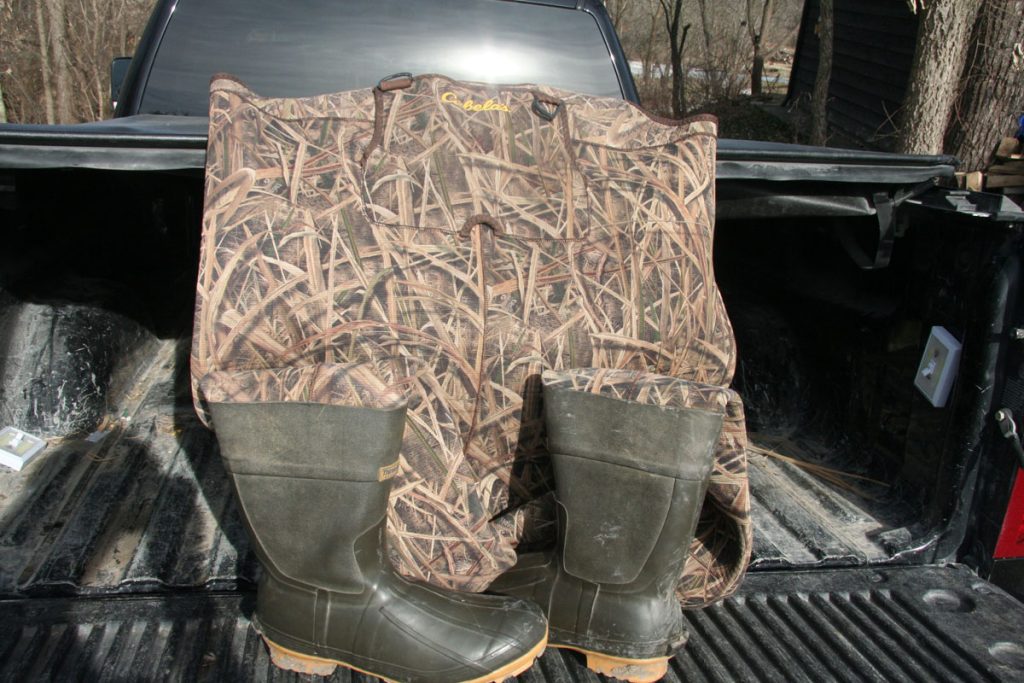
I have saved the last category for a reason. In my opinion, there is nothing more comfortable on the market than breathable waders. You can spend all day in these and when you take them off you are dry. Keep in mind perspiration has to go somewhere so it will come to rest in your outer layers. Most if not all breathable, waders are lined with a quilted material that will certainly feel damp when you remove the waders, but if you dressed correctly (read my article from December) your skin will be dry. Breathable waders fit like a pair of pants that you can wear all day. Typically they have fleece-lined pouches, shell loops, some have magnetic pocket closures and others have large hook and loop pouches. They are warm and dry. Many styles now also include a front zipper that makes getting them off and on even easier than they already are. But now the downside and that is the price. Breathable waders also tend to include an outside loose-fitting outer pant to protect the interior breathable material. You will pay anywhere from $400 to $1000 plus to own a pair of breathable waterfowl waders. Two brands come to the top at price. Sitka and Chêne (pronounced “Shin” meaning oak).
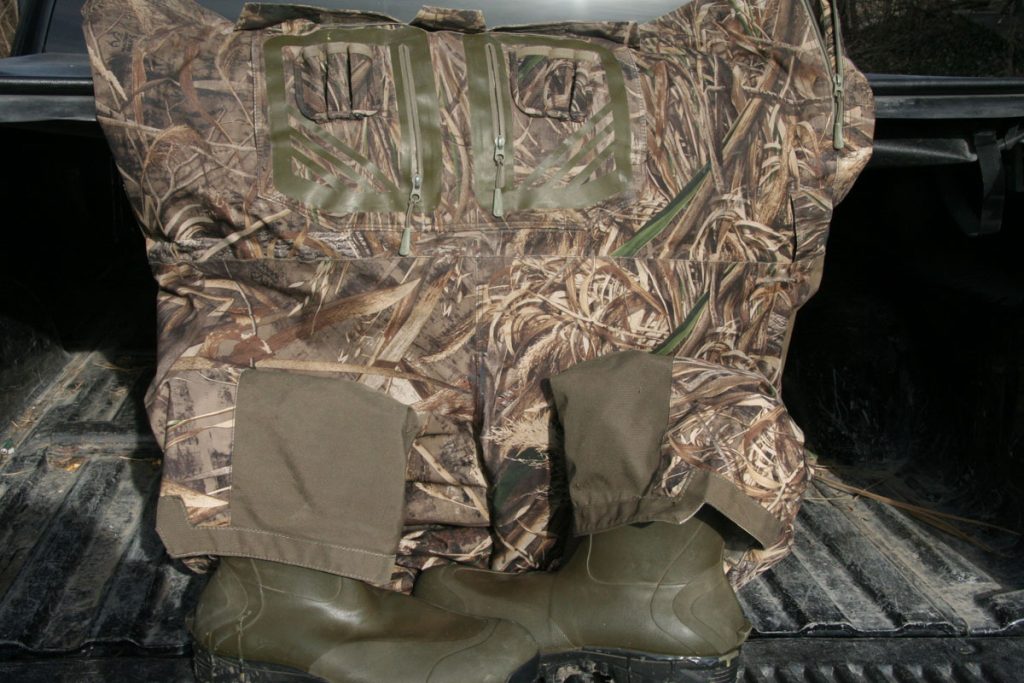
Both of these brands offer a wide range of wader options and will range in price up to $1100 a pair. That may seem to be a lot, but if they last, over time three new pairs of waders add up. Both have a limited lifetime warranty and can in many cases repair your waders if damaged or leaking.
Two other brands worth exploring are Drake and Banded waders. Both of these brands will be in the price range from $300 to $500. Both have a variety of options and offer a wide range of sizes and body types. Both are available in women and youth sizes. I have worn Banded waders for three years and find them comfortable for my large size.
Finally, one might consider brands that are local to the industry. For example, Roger’s Sporting Goods offers a wide line of store branded waders that are in a price range of $250 or less. These are breathable and I have friends that wear them with great success.
There are many options for waders exclusively used for waterfowl hunting. I highly recommend a trip to the sporting good store to try on some waders and see what is out there. The big chain stores will have multiple brands to explore. The bottom line with waders is being dry and warm but comfortable all day long.
